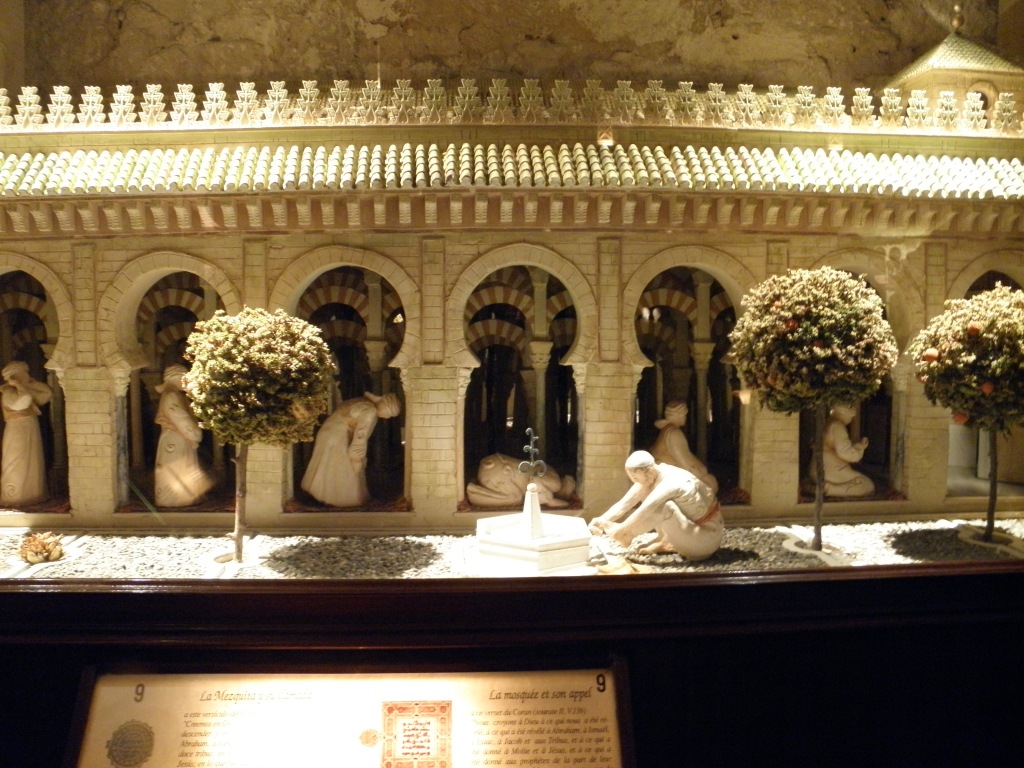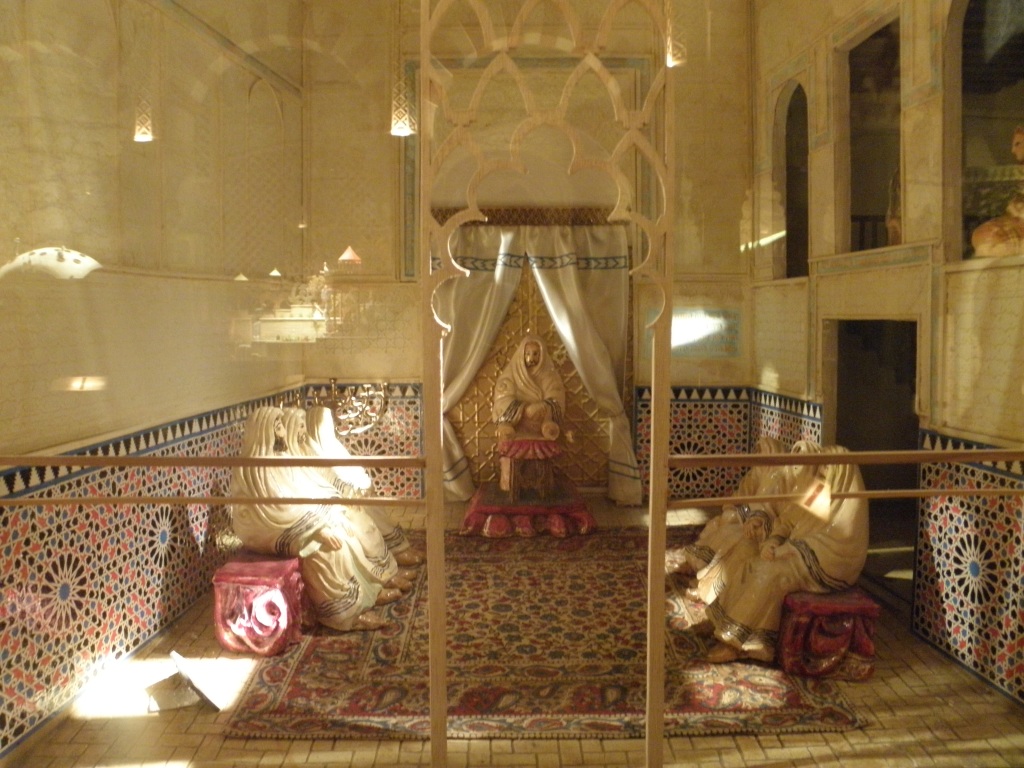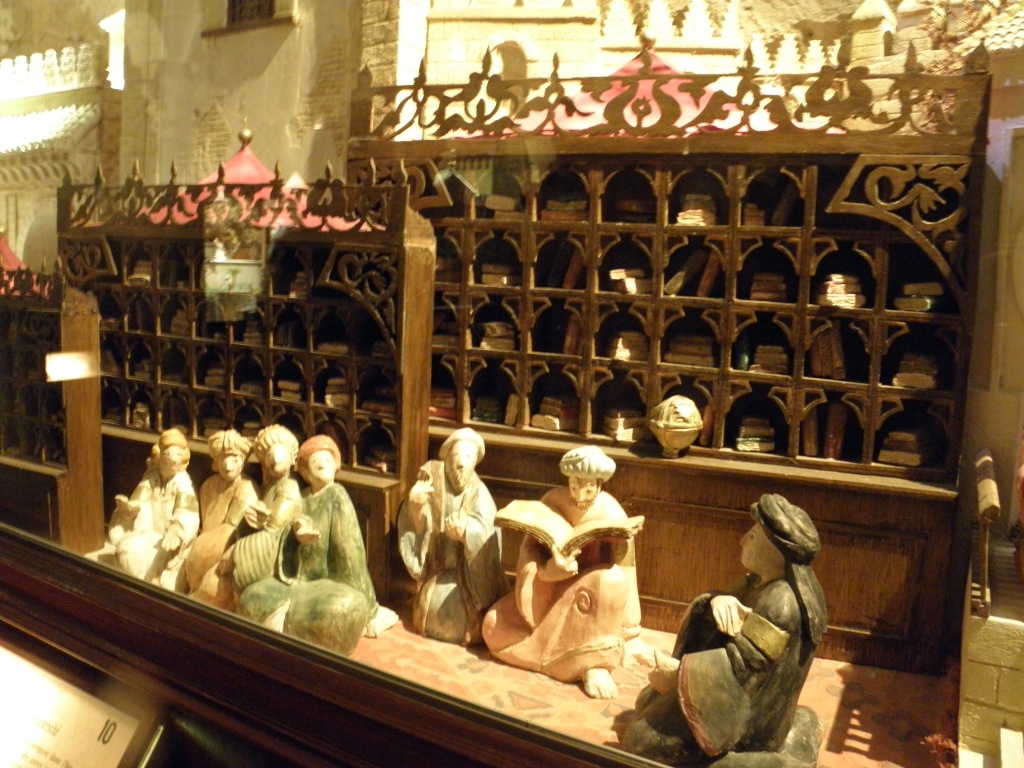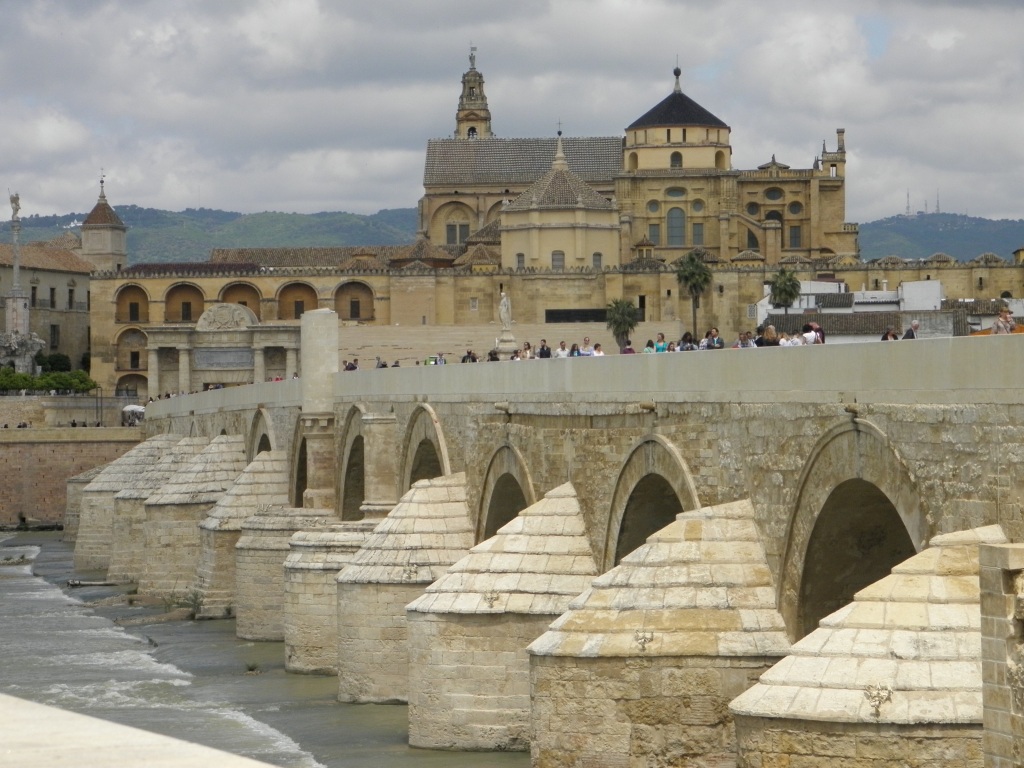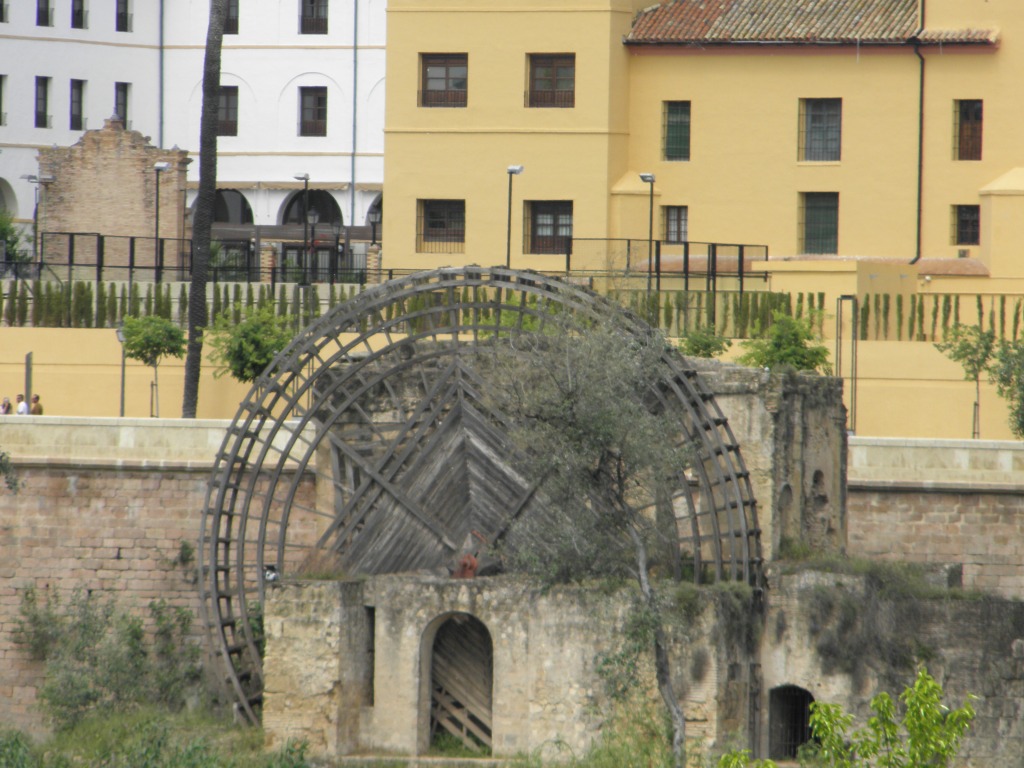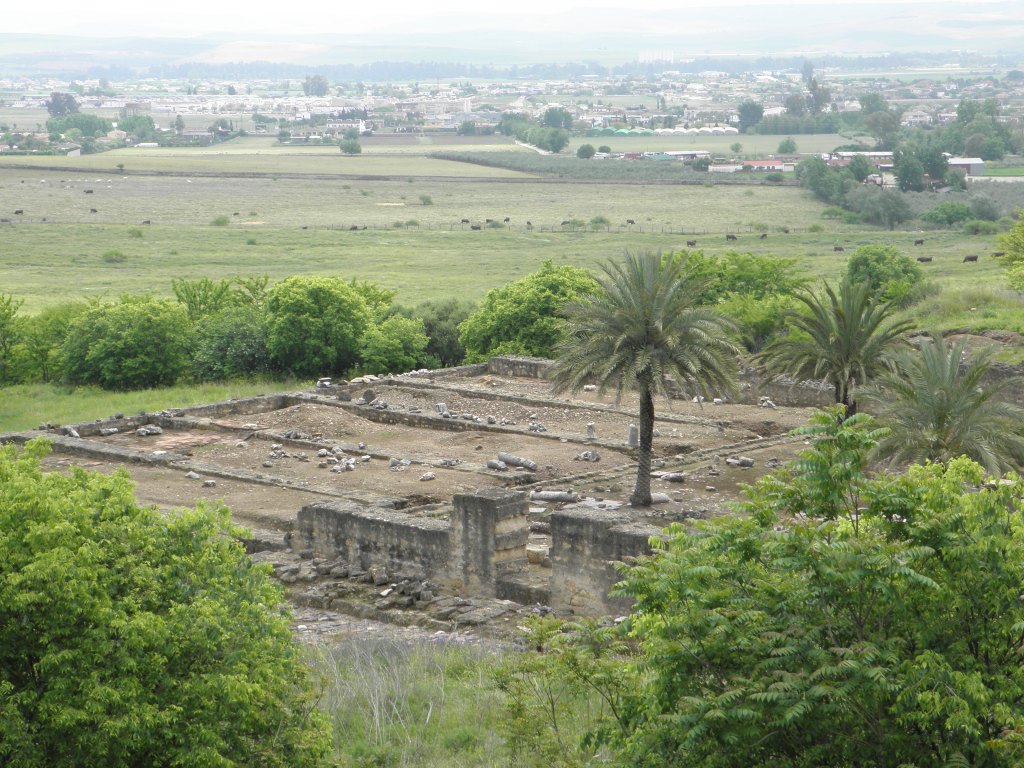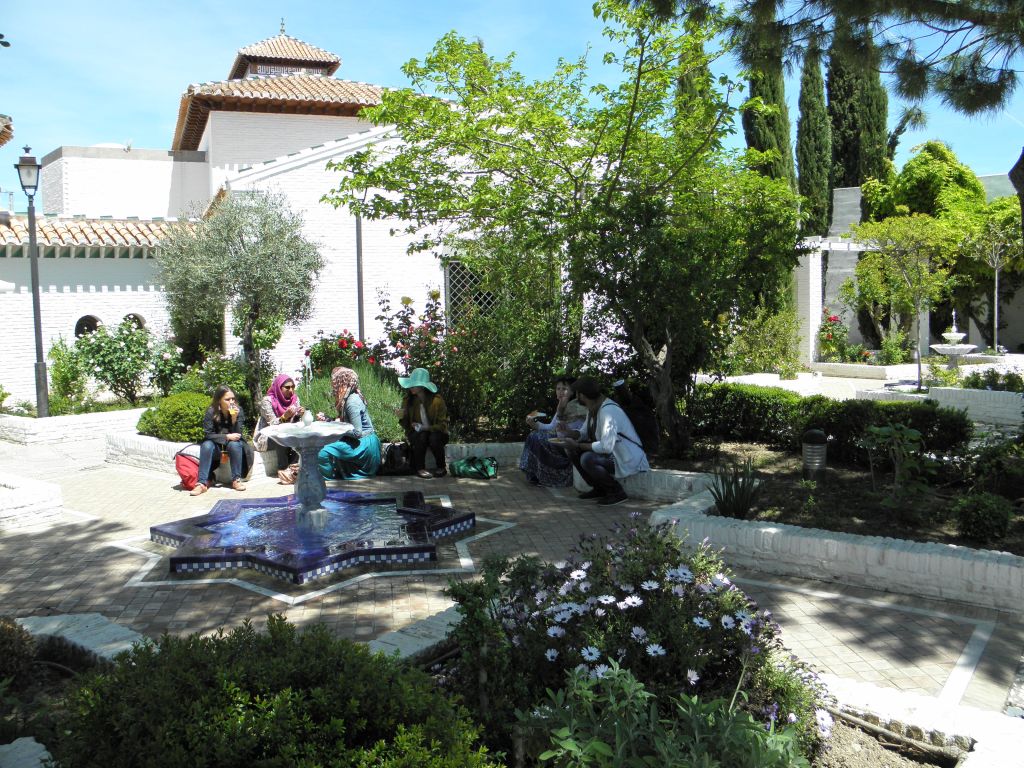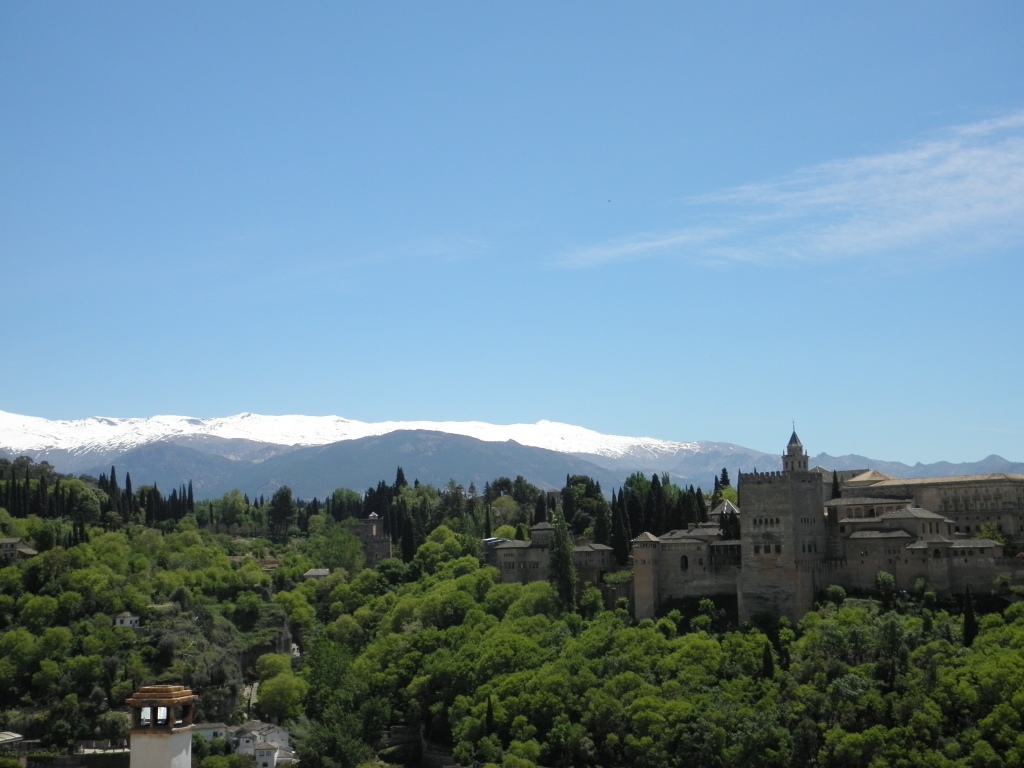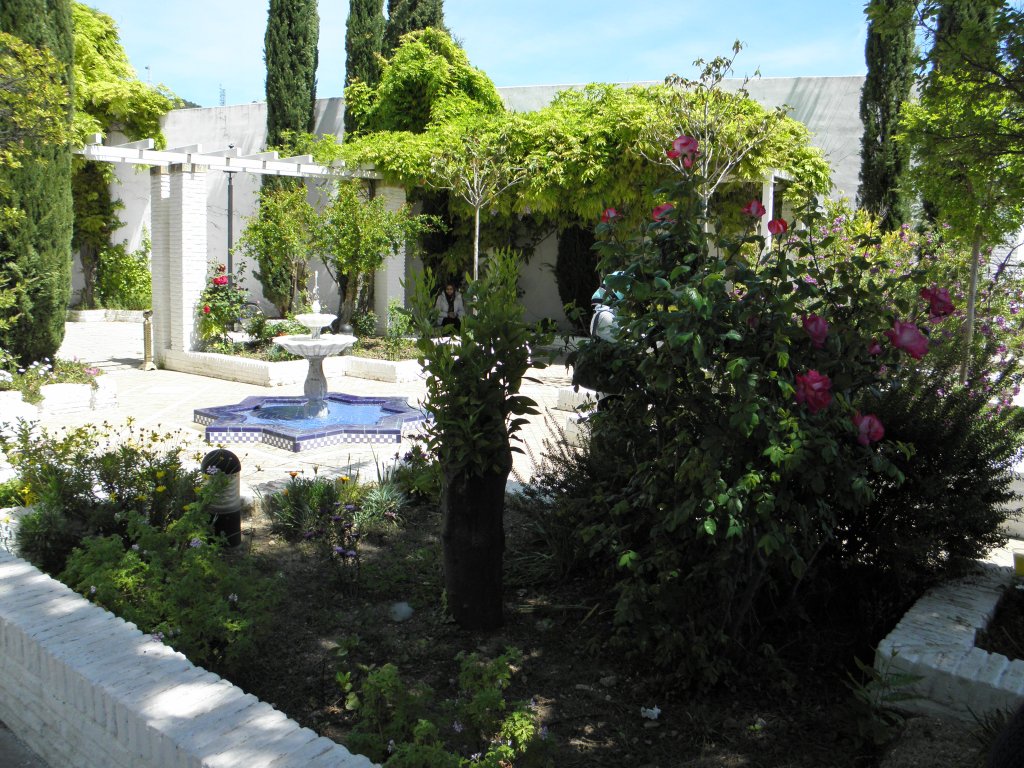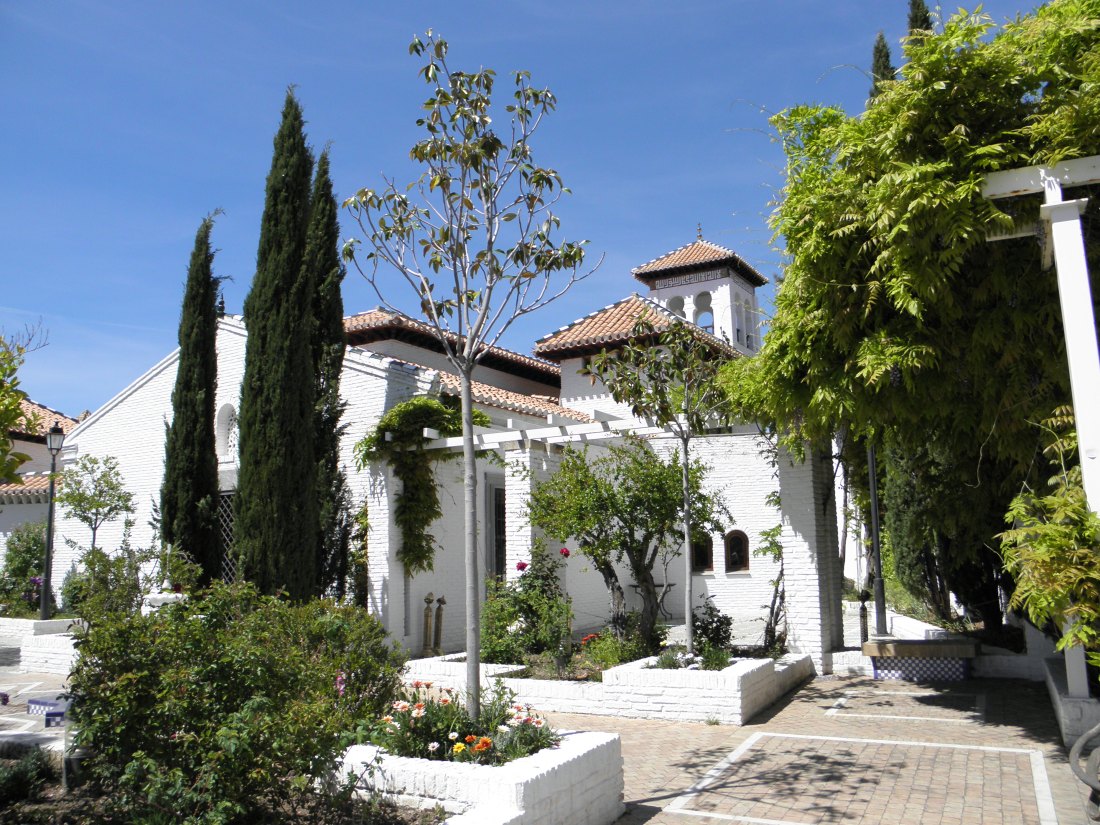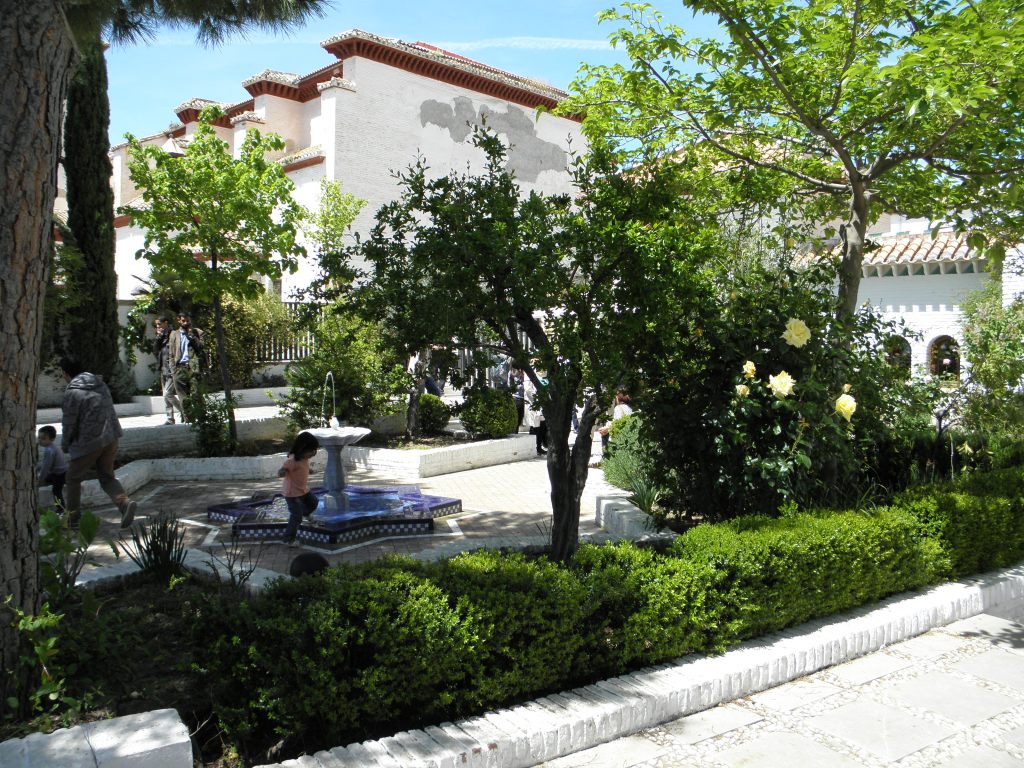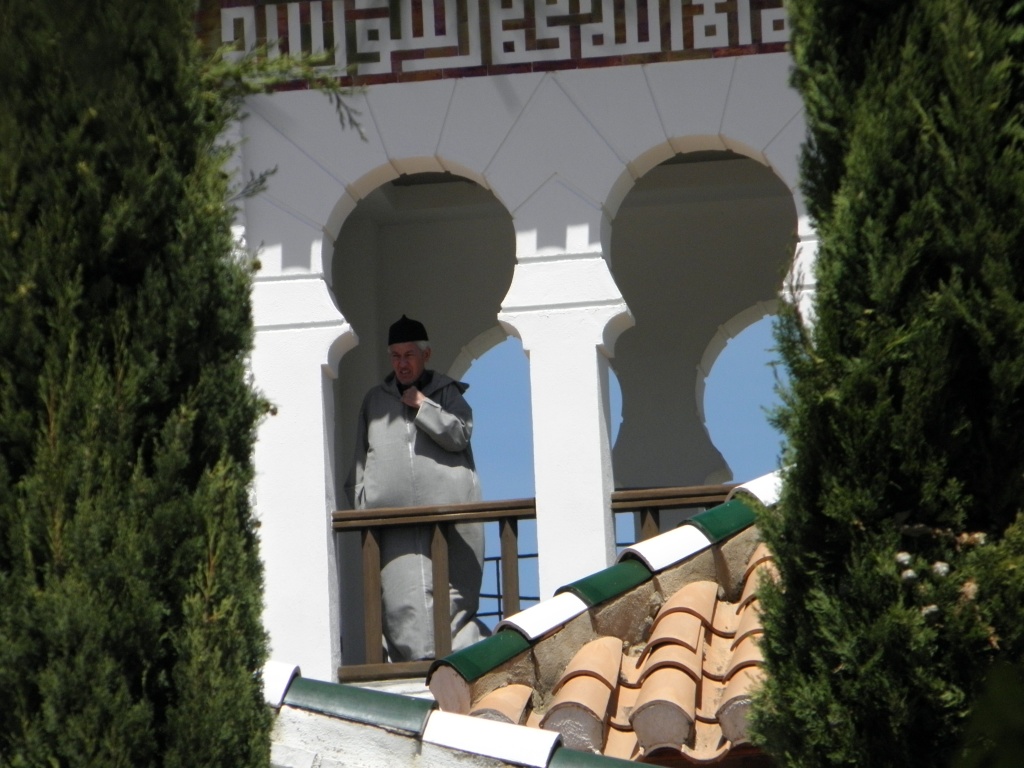Dear readers,
Assalamu alaikum, peace be with you,
I cannot move to sharing other snippets from our rihla, without posting on the Mezquita de Cordoba. I had read and heard a great deal about it, and for me, it was a dream come true to be able to stand inside and wander through that magnificent pattern of palm-tree columns.
‘La mezquita’ as the locals still chose to call it, is the Cathedral of Cordoba. Recently (since a few years ago), signage has begun to read ‘Mezquita-Cathedral’, though for centuries since it was turned into a cathedral, it was still simply called ‘la mezquita’. The locals would say “I’m going to the mezquita for mass”! It used to be the ‘jamia masjid of Cordoba’ (the grand mosque of Cordoba. The word ‘jamia’ comes from ‘jumu’ah’ or Friday..as related in previous posts..the word for Friday comes from the word for gathering as it is when Muslims gather for a communal prayer. Therefore the largest mosque in a city is usually called the ‘jamia’ mosque. It often tends also to be the grandest, and so in English a more appropriate translation has become ‘grand mosque’, though perhaps ‘main mosque’ is more apt). The mosque, in the style of the great Umayyad mosqe of Damascus (God grant it is safe, and this needy abd [=slave] the chance one day to visit!] was built on where there used to be a Visigothic Catholic Church (from ~600 CE to 800 CE) that used to be an ancient Roman temple. I am not sure if any part of the original Church remains, but you can see some of the foundation of the ancient Roman temple. Perhaps the temple was used as a Church ? I do not know. What I do know, and I did some research on this, is that AbdurRahman-I who was the first caliph of Al-Andalucia bought the property for a huge sum of money (~ 100,000 dirhams possibly) from the Catholic church and then built his mosque. He bought it after a few years of sharing the property (paying rent of course) and thereafter upon needing more space for the growing Muslim population.
The original was expanded by successive caliphs to become the huge complex of close to 1000 pilars. Mosques in the Muslim world have always been more than places of worship. It’s the ‘family hang-out’, the ‘classroom and university’. Actually in the Islamic Golden Age, great teachers were born out of the mosque-circles. Usually a speaker/teacher would lean on a pillar after the salah (=prescribed 5 times a day ritual worship, I’ve described the term elsewhere) and give a talk. People would sit to listen, if the talk is good, more people join…and so a teacher’s fame spreads. Even today the mosque in Al-Azhar in Cairo (the second oldest University in the world) serves the same purpose. If you go there, you will see these circles by a pillar. In those days anyone on the street could wander in and sit down to listen. Even today you can do this, very few Muslims do have the interest to however. In them days, people would come in droves and soon a speaker would be addressing hundreds.
The pillars in the Mezquita de Cordoba have this double arch structure – so evocative of the branches of a date-palm. Others have said more eloquent things about it, so I will limit myself here. Only to add, an engineered effect of all the pillars is the feeling one gets of eternity….of a seemingly never-ending path of tall trees. This is very typical of Islamic art – you will often find repeated patterns, some intricate and elaborate. Often on nature themes. A reminder of the eternal life to come, of paradise, which was our home, and of God the almighty, who is limitless and eternal. Eternal is a poor word according to Muslim theologians, as it still talks upon the frame-work of time. And we believe God, is beyond time, being The Creator, and the Creator is not like the creation. ” …laisaka mithlihi shai =There is nothing like unto Him” (Quran 42:11). So we say, to try to capture this idea better; God is beginninglessly eternal and will be forever, endlessly (the Arabic captures this better).
After the reconqista, the mosque was converted to a church. It would have been torn down (hence why none of the Jamia masajid of other Andalucian cities remain) except the local people were so fond of it, they protested. The Catholic authorities could not therefore, and instead built a cathedral in the middle of it. The cathedral itself is quite grand. But I must be honest – the two art-forms just do not go well together. The overall effect is rather strange and unnerving. I found it very jarring to my artistic sensibilities. I was not the only one, apparently the pope of the time, when he came to visit it having being invited to see the accomplishment by the local Catholics on completion, is reported to have said something along the same lines. However it is a good thing this was done, as it is probably what saved the structure from destruction, particularly during the Inquisition. Wa Allah a’lam (=and God knows best)!
Here are pictures. Please read the captions.
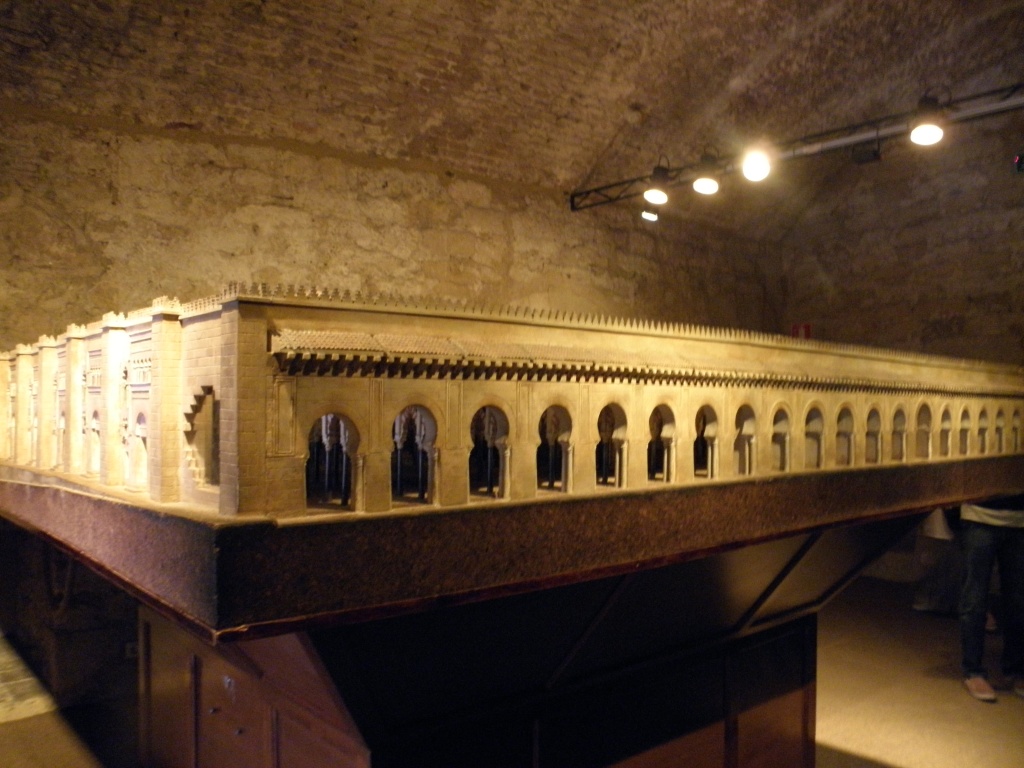
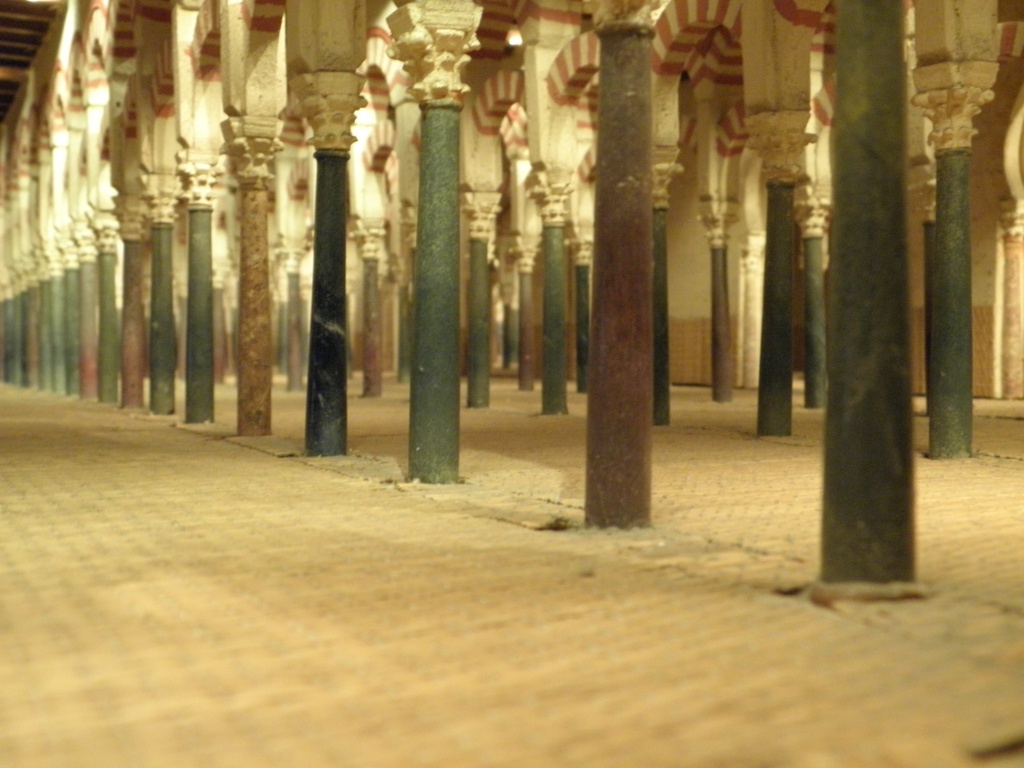
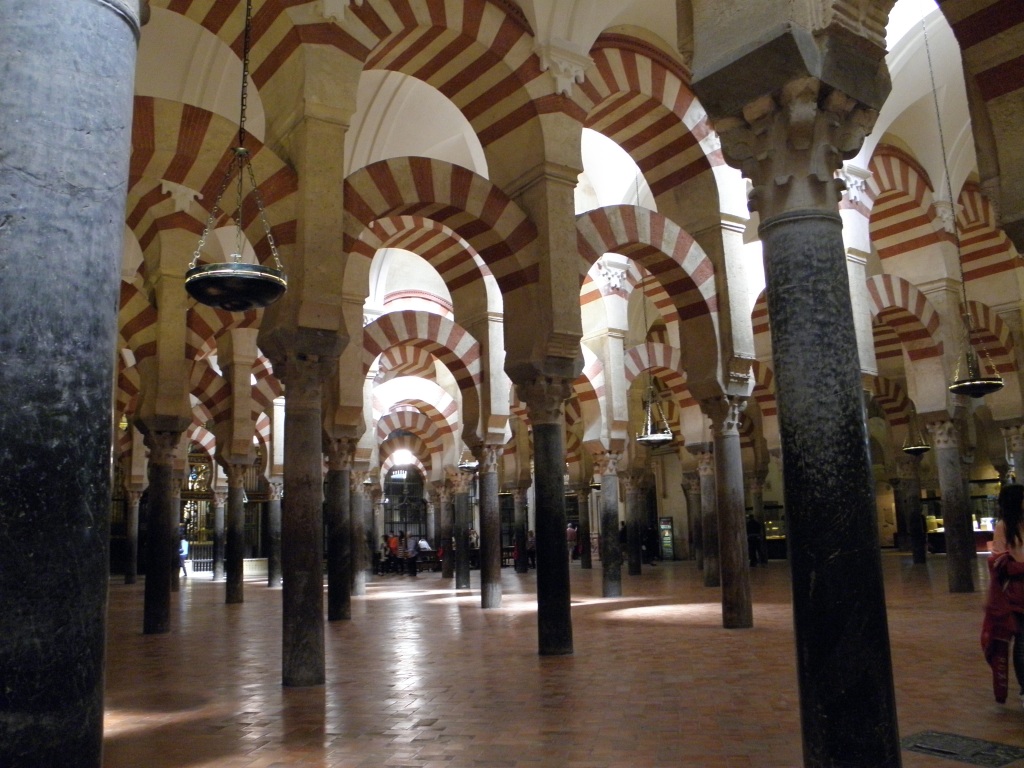
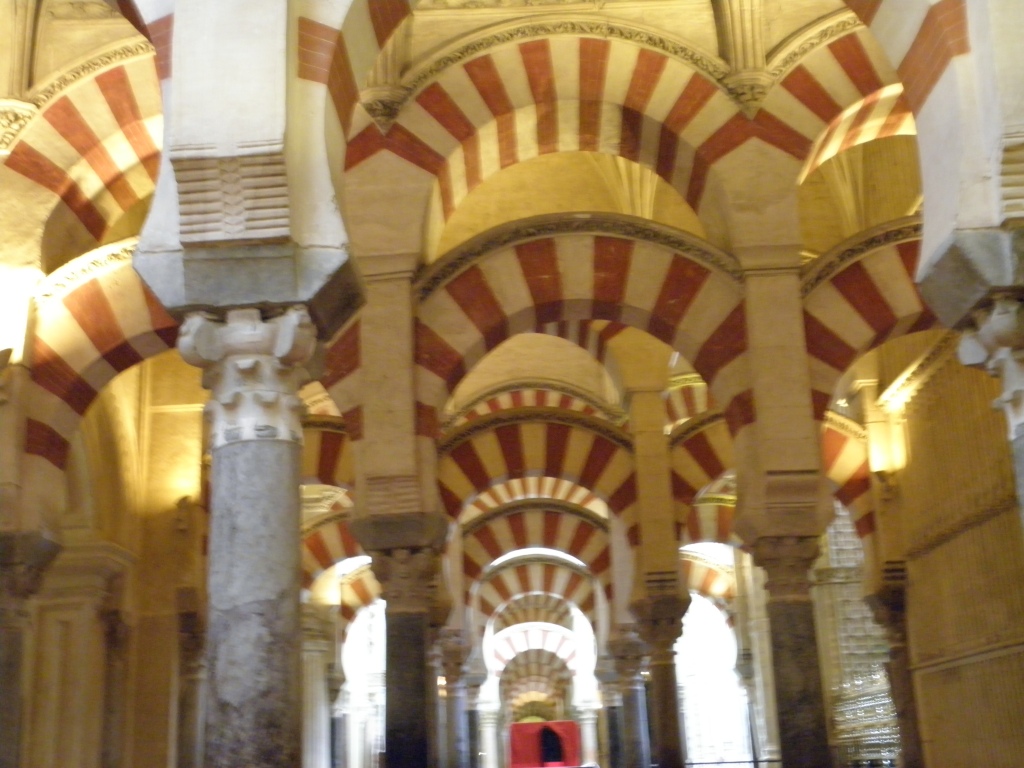
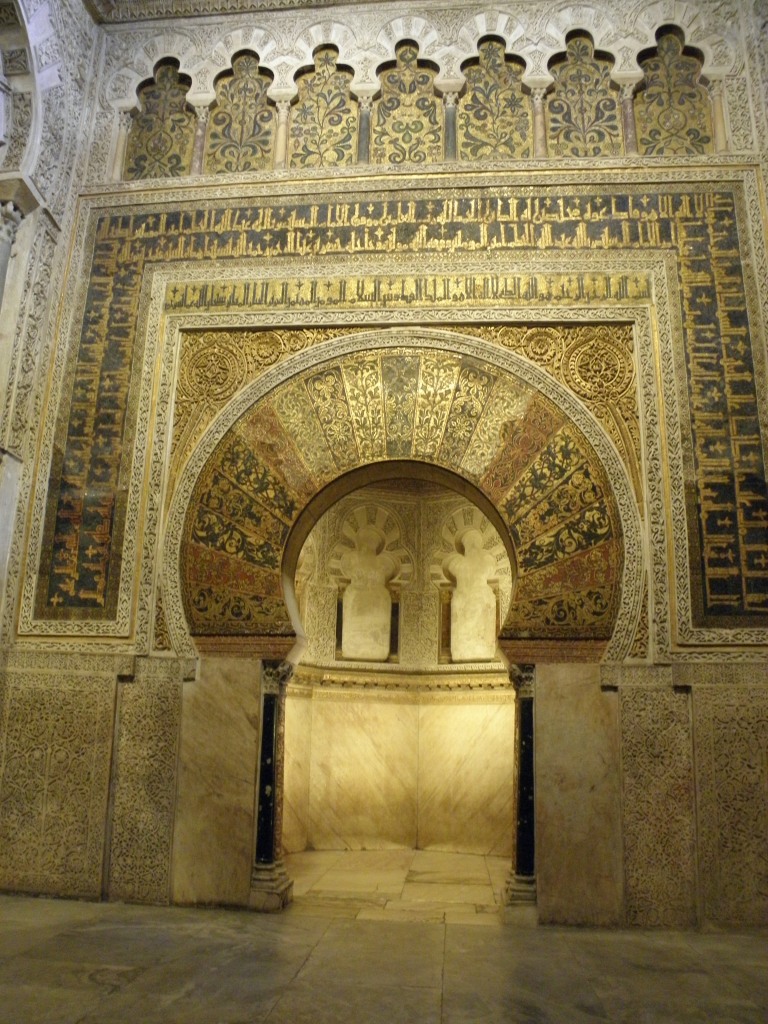
The ayaath above the mihrab are the last lines from Surah Hashr. They are often recited in prayer.
“He is Allah, than Whom there is La ilaha illa Huwa (=none has the right to be worshipped but He) the All-Knower of the unseen and the seen (open). He is the Most Beneficent, the Most Merciful. (59:22)
He is Allah than Whom there is La ilaha illa Huwa (=none has the right to be worshipped but He) the King, the Holy, the One Free from all defects, the Giver of security, the Watcher over His creatures, the All-Mighty, the Compeller, the Supreme. Glory be to Allah! (High is He) above all that they associate as partners with Him. (59:23)
He is Allah, the Creator, the Inventor of all things, the Bestower of forms. To Him belong the Best Names . All that is in the heavens and the earth glorify Him. And He is the All-Mighty, the All-Wise. (59:24)
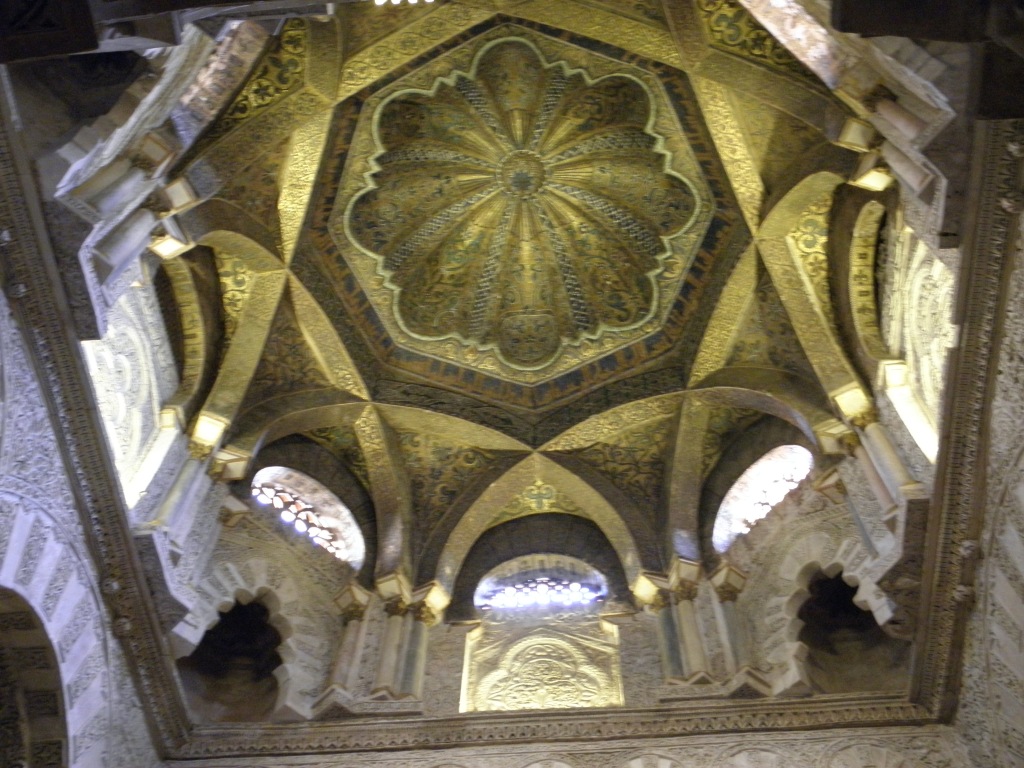
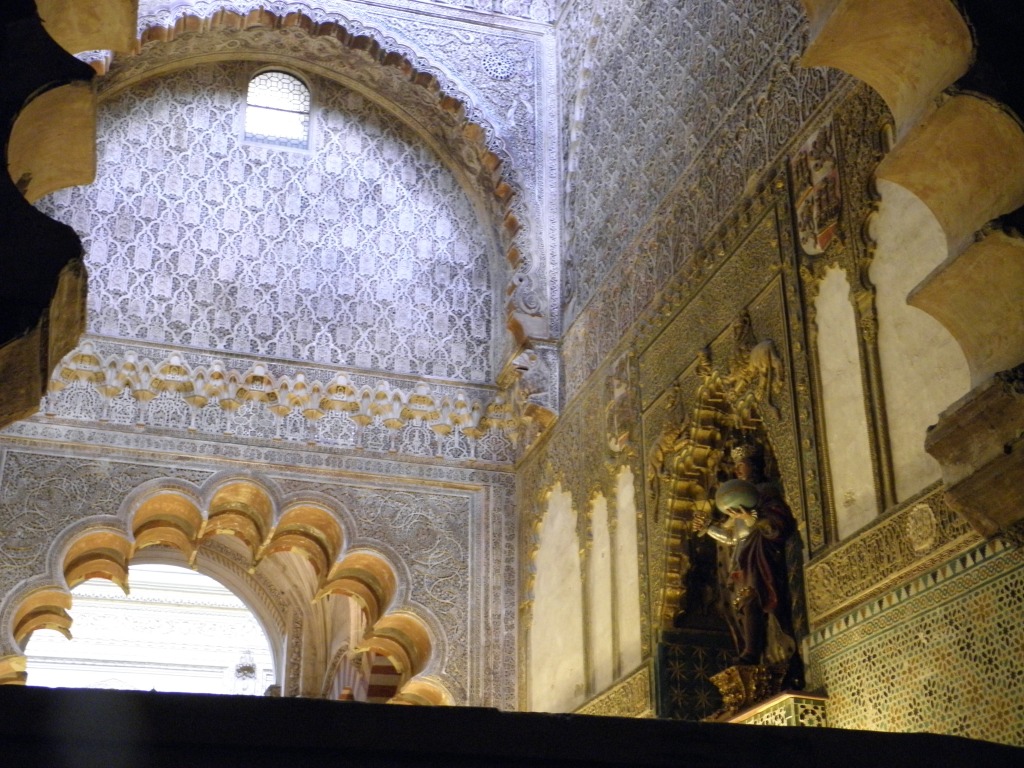
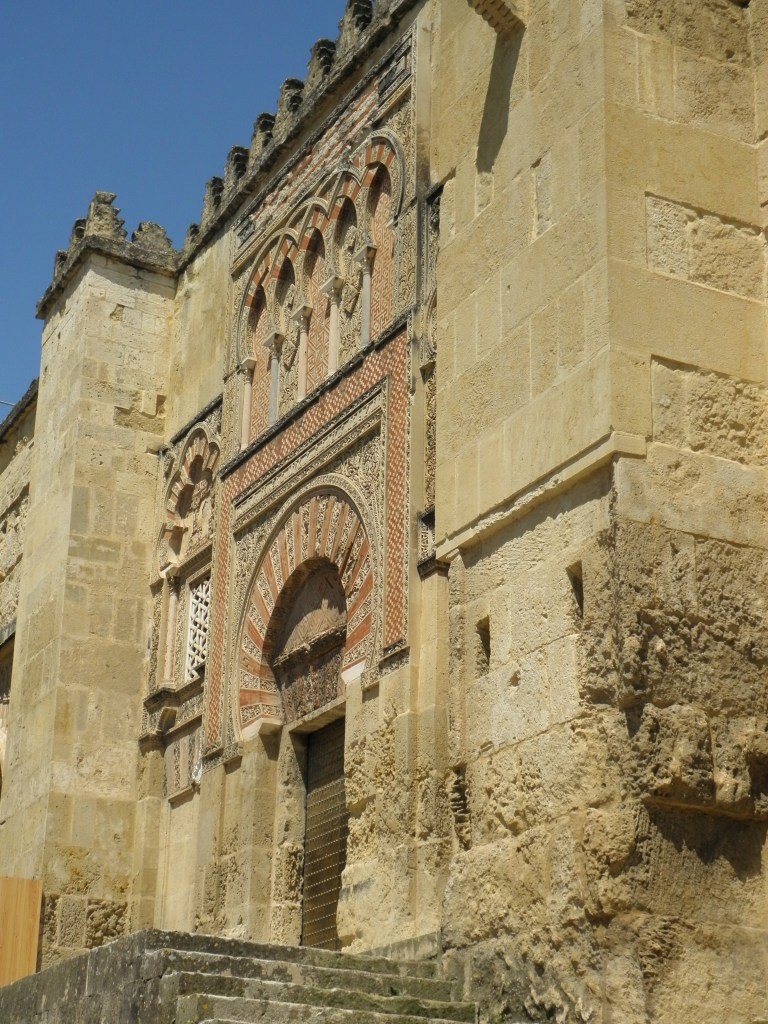
The above gives you a size of the structure. It was huge, at one time the second largest mosque in the Muslim world.
I will end by saying how many a great thinker and scholar must have sat and leaned on those pillars, how many rapt-eyed students at his or her feet. The space still seems to carry echoes of their lost voices.
Ending with a prayer for peace and understanding and truth told, no matter the cost
Peace be with you all.
